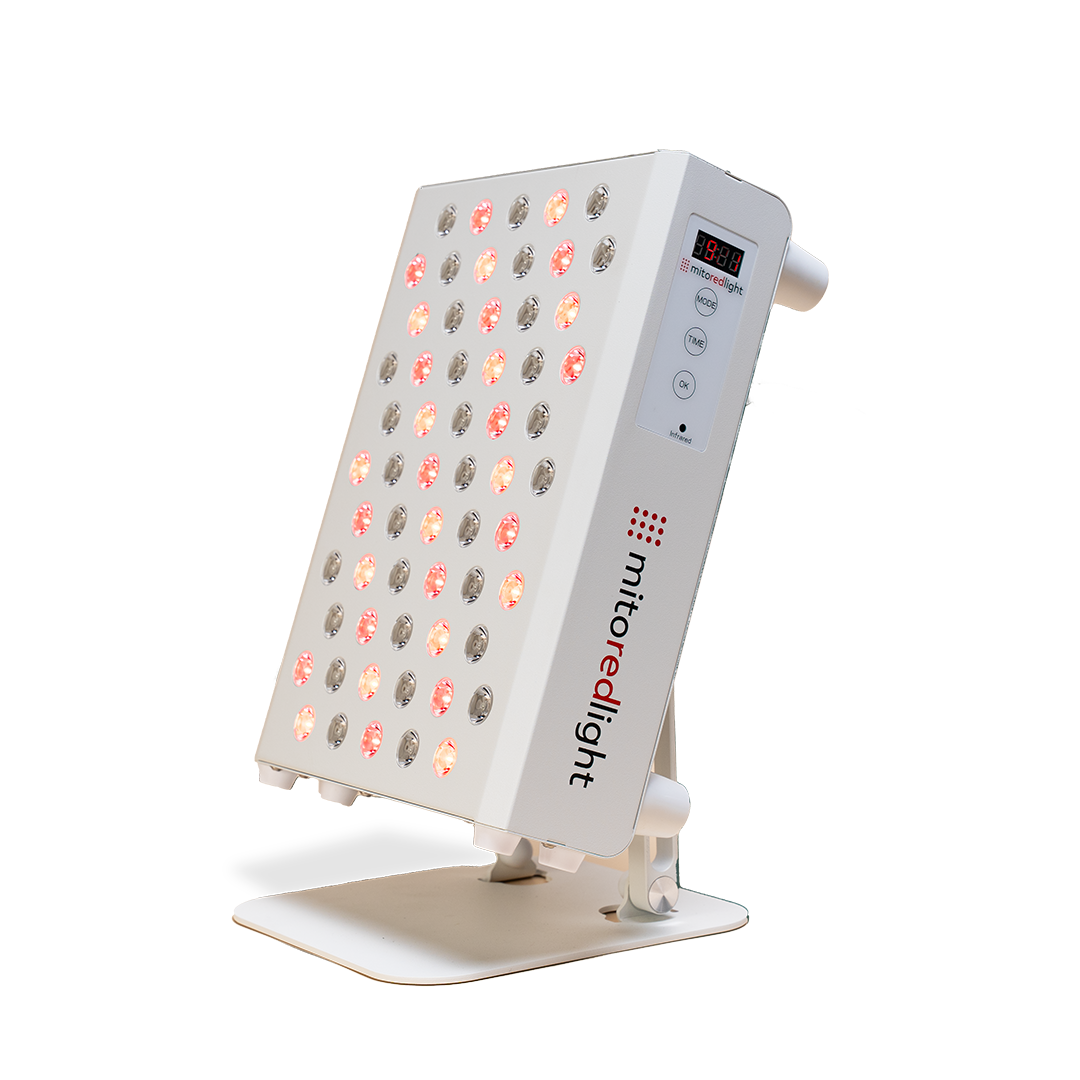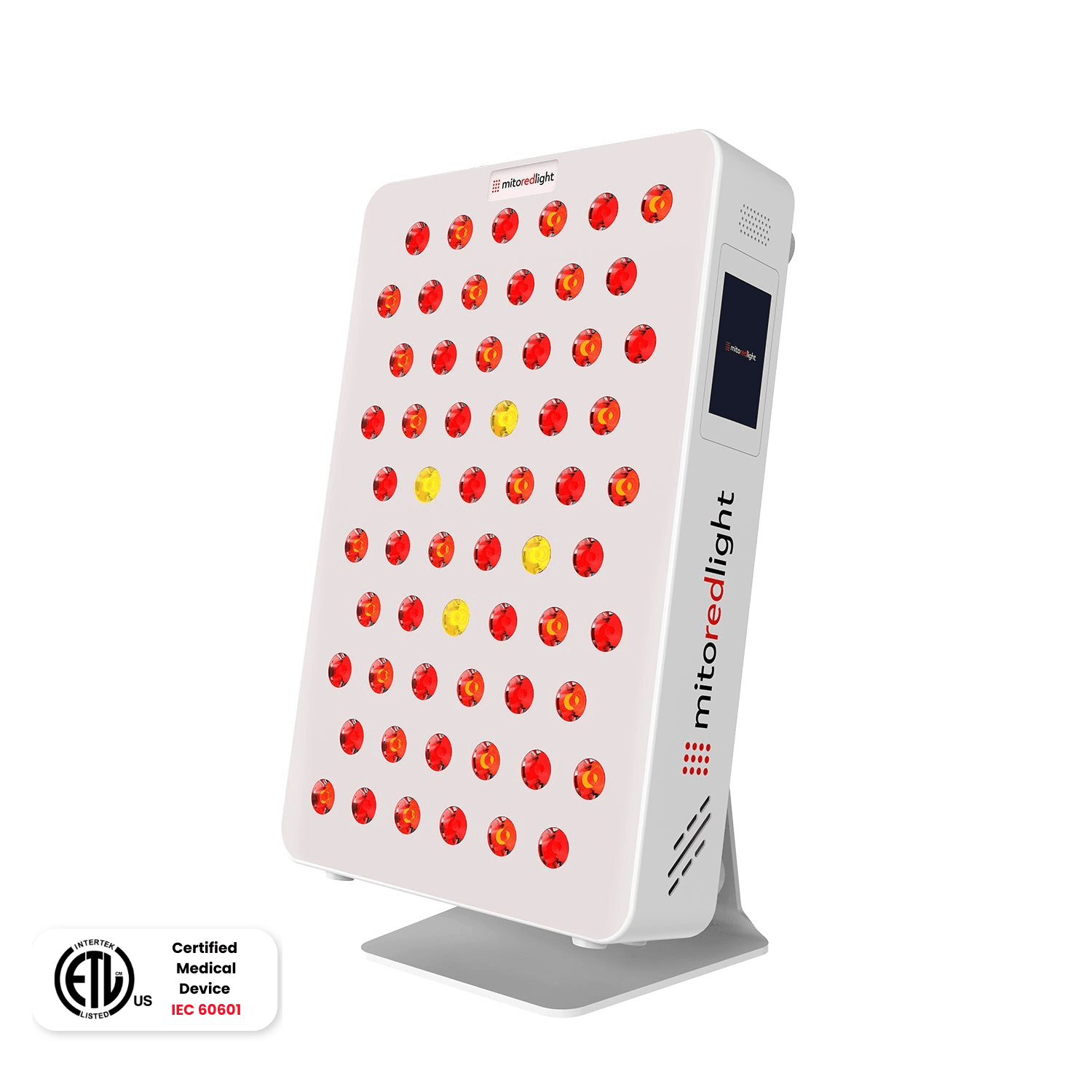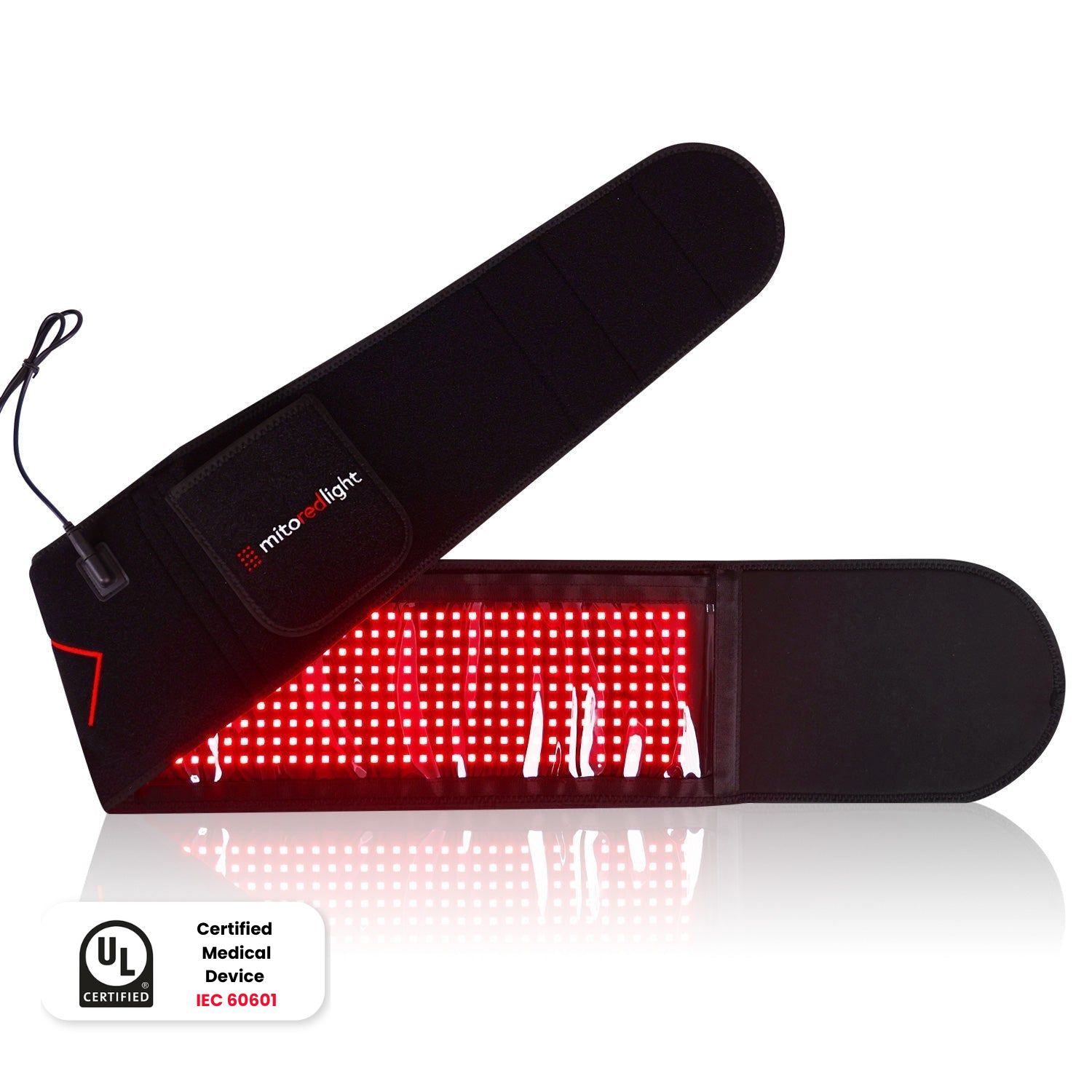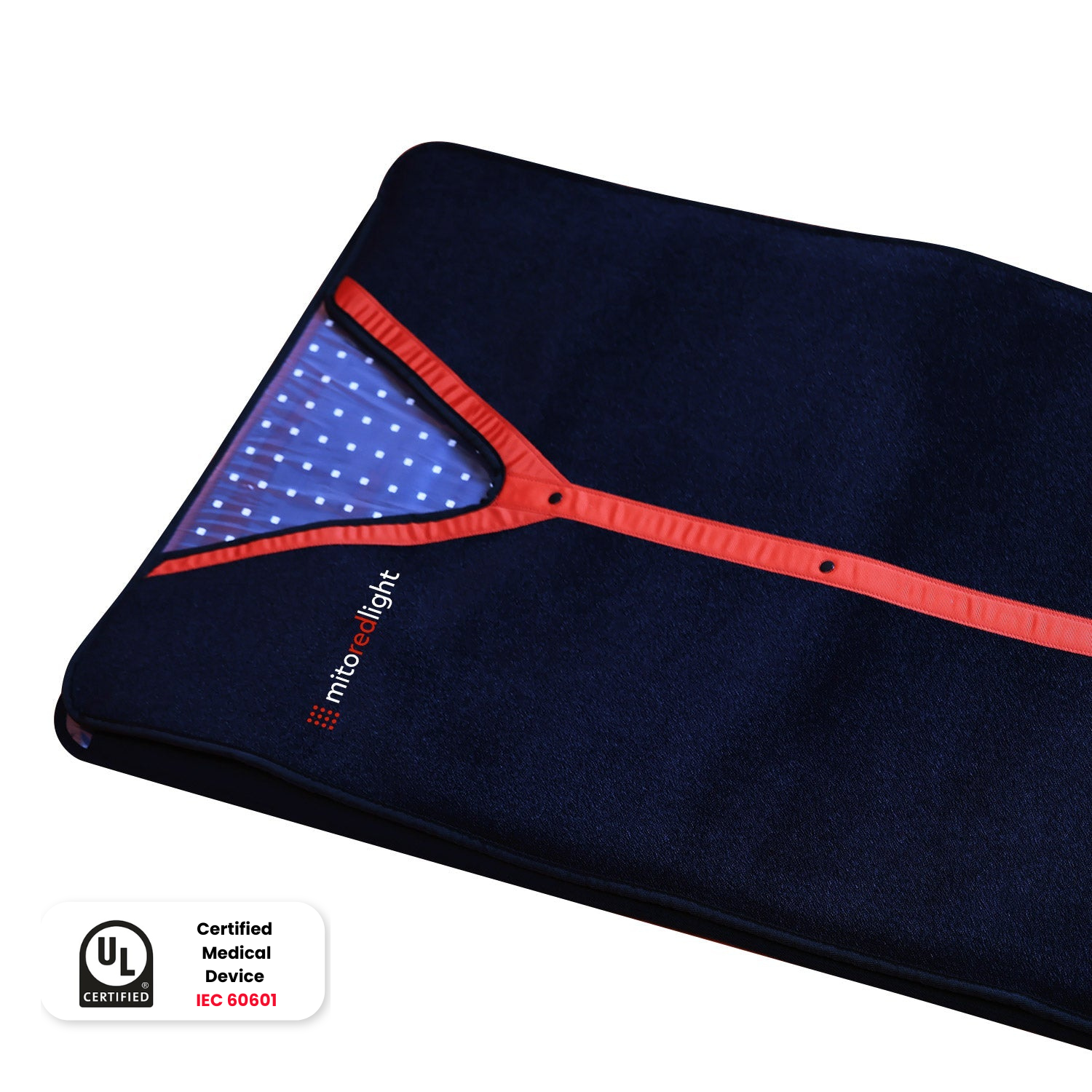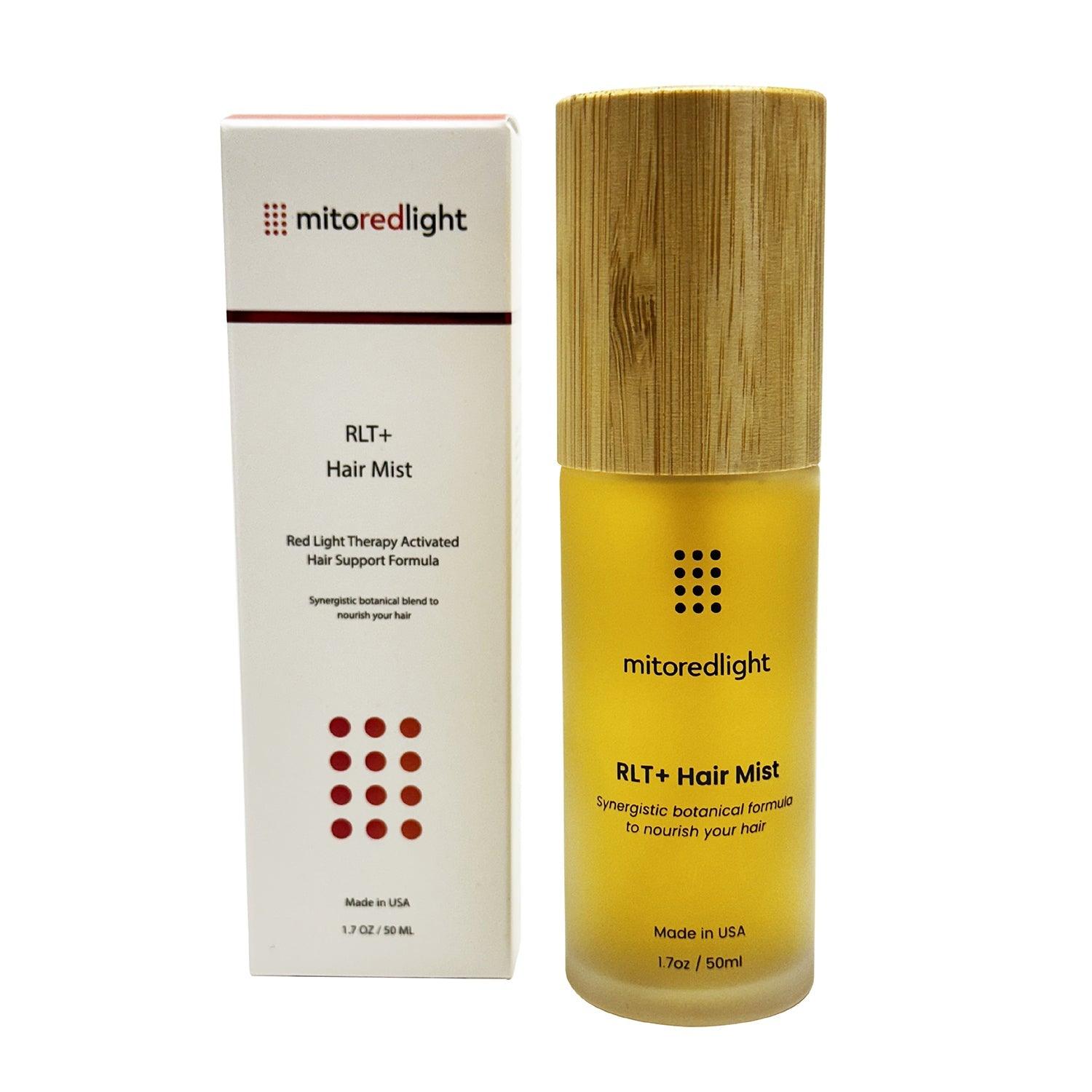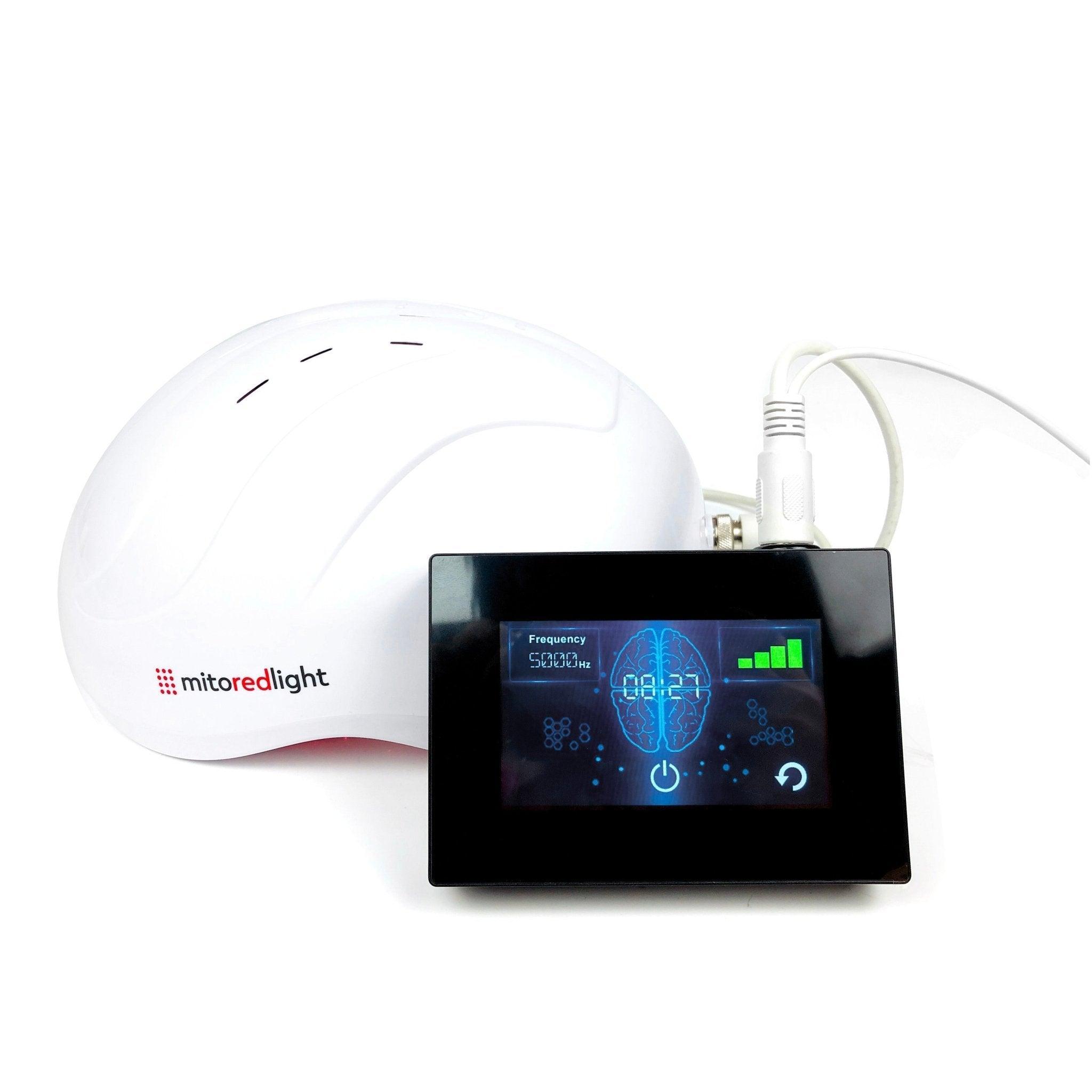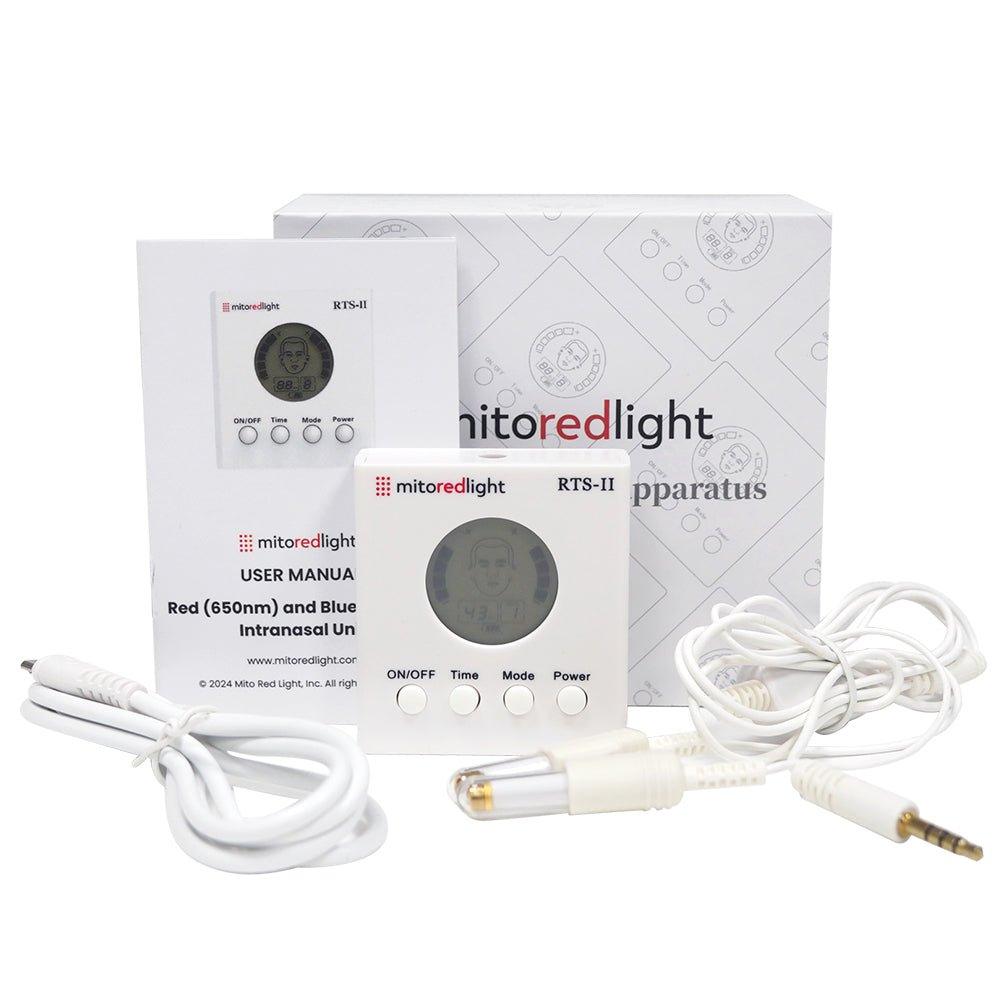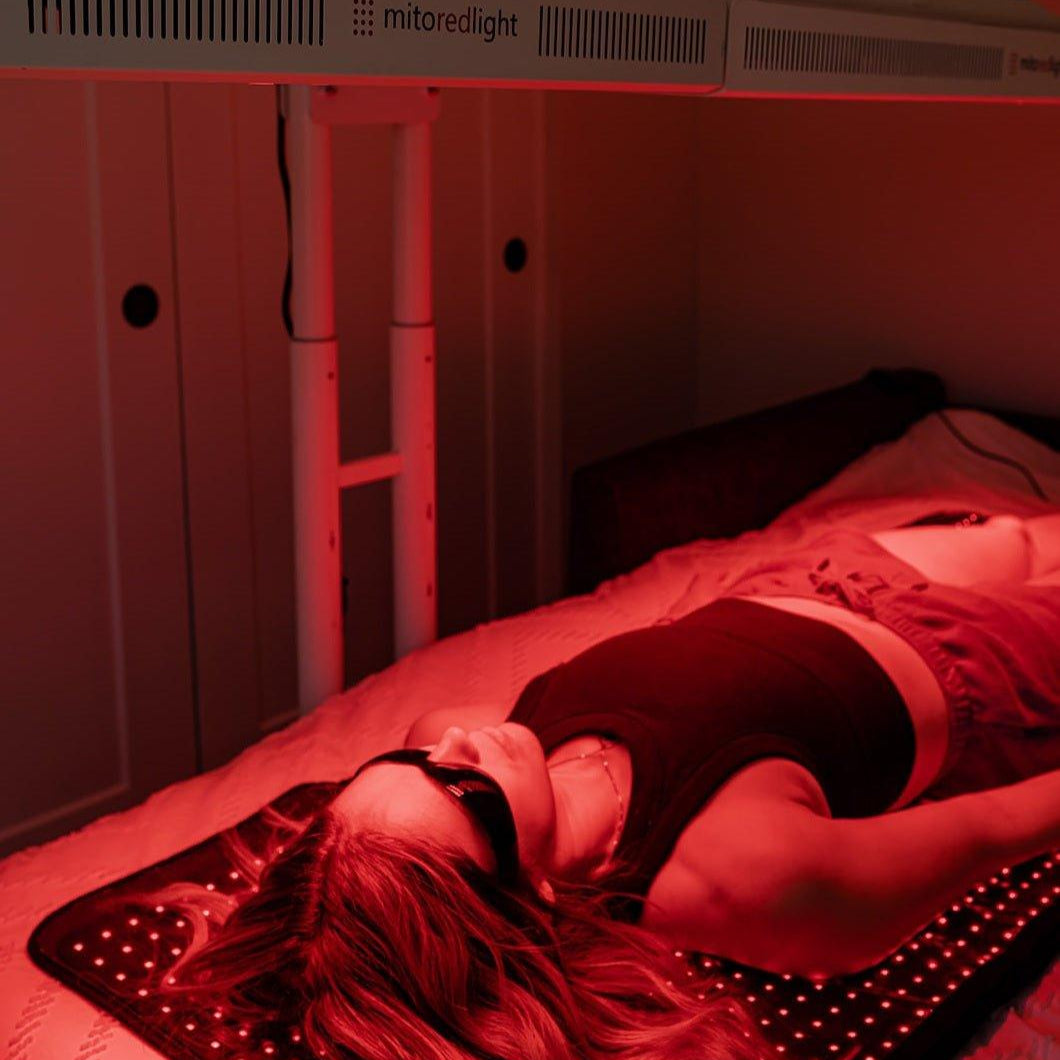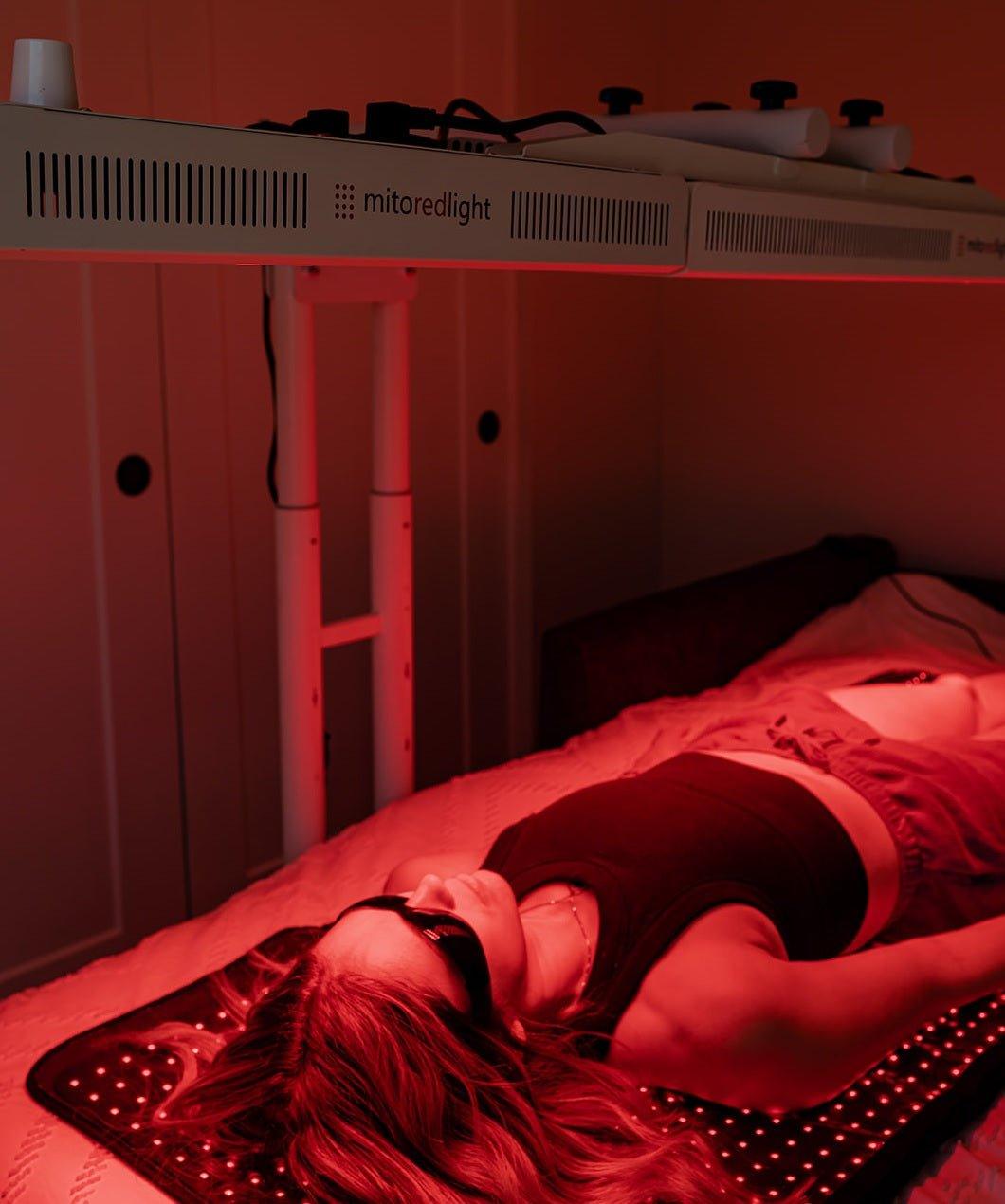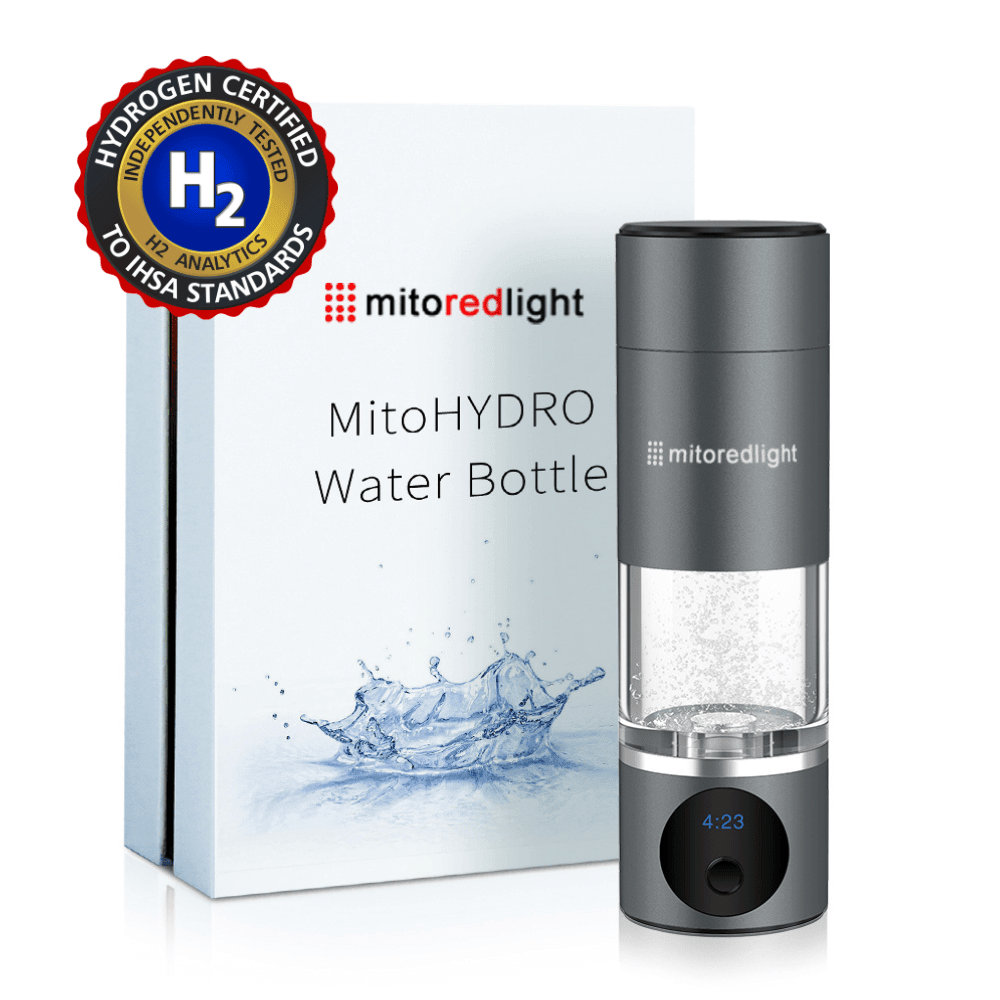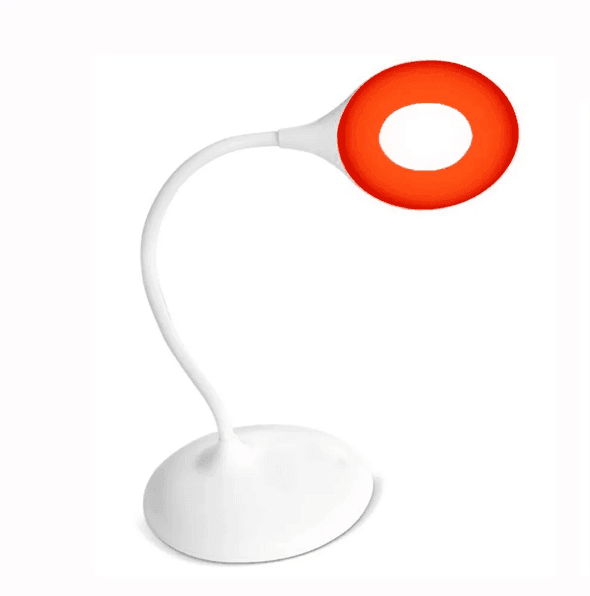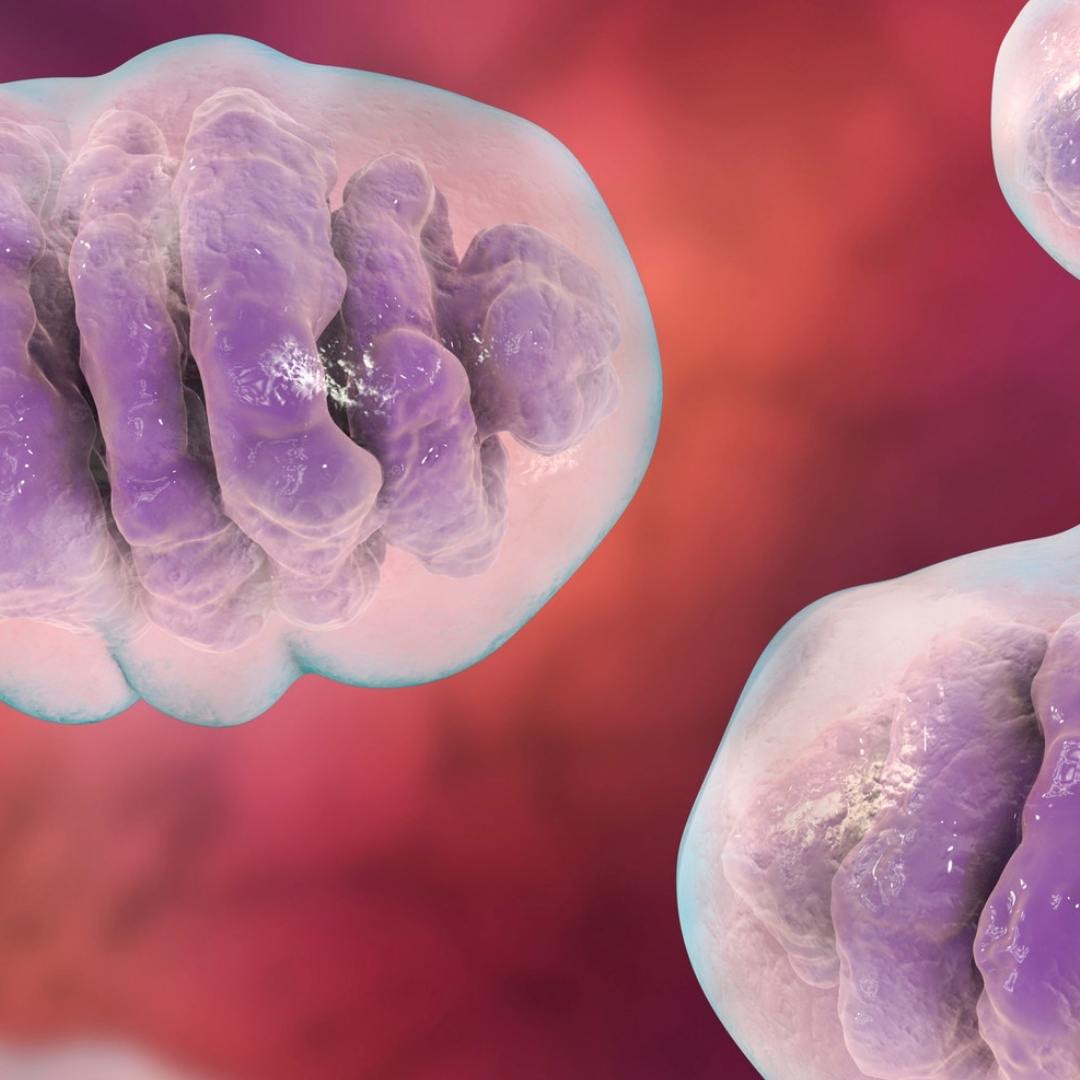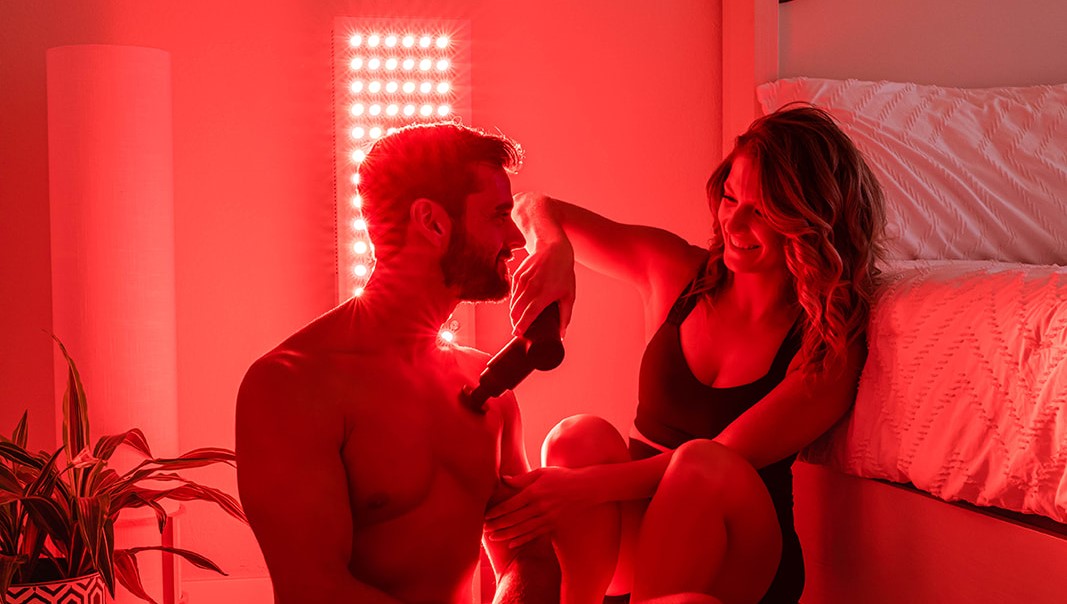Summary: Maximizing the benefits of red light therapy involves more than just the light itself; supplements, hydration, and sleep are key to enhancing its effects.
Enhancing Red Light Therapy with Supplements, Hydration, and Sleep
Red light therapy offers remarkable benefits for skin health, but pairing it with the right supplements, science-backed topicals, proper hydration, and quality sleep can significantly enhance its effects. In this blog, we’ll explore how dietary supplements, effective topicals, hydration, and sleep contribute to optimizing the results of red light therapy.
In addition to supplements, science-backed topicals may also pair well with red light therapy to enhance its effects. We’ll also explore the ways hydration and sleep support skin health and overall well-being, diving into the science behind these factors and how they work together to optimize your results for healthier, more radiant skin.
Supplements and Topicals to Enhance Red Light Therapy
Dietary supplements can play a significant role in supporting skin health, offering a range of benefits like improved collagen production, reduced inflammation, and enhanced hydration. These effects are crucial for maintaining healthy, youthful-looking skin, and when combined with red light therapy, they may amplify the therapy's results, accelerating the process of skin rejuvenation. Supplements may work alongside red light therapy by supporting the body's natural healing processes, enhancing cellular function, and helping the skin repair more efficiently.

Supplements for Skin Health and Red Light Therapy
By incorporating the right supplements into your routine, you can help optimize your red light therapy results and support smoother, more radiant skin. Some nutrients directly influence skin structure and elasticity, while others enhance cellular energy production, reduce oxidative stress, or even interact with light to promote repair and regeneration. Key supplements that may complement red light therapy include:
-
Coenzyme Q10 (CoQ10) / Ubiquinol: Ubiquinol, the active and reduced form of CoQ10, supports mitochondrial energy production and helps protect cells from oxidative stress. Clinical research shows that oral CoQ10 supplementation can improve skin smoothness and reduce the appearance of fine lines and wrinkles by enhancing cellular energy and antioxidant capacity [1]. By improving mitochondrial efficiency, ubiquinol may complement red light therapy to promote collagen synthesis, skin elasticity, and overall cellular vitality.
-
Curcumin: Curcumin supports skin repair by improving collagen formation, reducing inflammation, and promoting faster tissue recovery when paired with light-based therapies. Studies show that curcumin can act as a natural photosensitizer under visible light, enhancing cellular repair processes by activating genes involved in cell growth and matrix remodeling [2]. These mechanisms may complement the regenerative effects of red and near-infrared light by supporting mitochondrial health and reducing oxidative stress.
-
N-acetyl cysteine (NAC): NAC is a precursor to glutathione, one of the body’s most important antioxidants. Taken orally, it helps neutralize excess free radicals and supports cellular detoxification, which may enhance recovery and promote a balanced inflammatory response during and after red light therapy. Preclinical research combining NAC with red light shows reduced oxidative stress and inflammatory signaling, suggesting a potential synergistic effect that supports healthy tissue repair and resilience [3].
-
Quercetin: Quercetin is a powerful flavonoid with antioxidant and anti-inflammatory properties that help protect cells and support tissue repair. When combined with red light therapy, it shows promise in enhancing healing outcomes by improving collagen formation, reducing oxidative stress, and moderating inflammation. Preclinical research demonstrates that this combination accelerates wound healing and promotes better tissue organization by supporting mitochondrial function and balanced cellular regeneration [4].
-
Molecular Hydrogen: Hydrogen-rich water acts as a selective antioxidant that helps neutralize harmful free radicals while preserving normal cellular signaling. Taken orally (or used as a bath), it supports mitochondrial health, reduces oxidative stress, and promotes a more balanced cellular energy state. When combined with light-based therapies, early human and preclinical research suggests hydrogen-rich water may enhance the benefits of photobiomodulation by improving mitochondrial efficiency and supporting tissue resilience [5].
Supplements That May Be Complementary to Red Light Therapy
- Schisandra Berry: Schisandra berry contains powerful antioxidants that help protect skin cells from oxidative stress and support a healthy skin barrier. Its seeds are rich in lignans, the main bioactive compounds responsible for many of Schisandra’s antioxidant and adaptogenic properties. While oral studies show that Schisandra supports the body’s natural antioxidant defenses and stress resilience, topical research demonstrates direct benefits for skin cells, including improved hydration, elasticity, and protection from oxidative damage. Together, these effects may complement red light therapy by enhancing cellular balance and supporting overall skin vitality [6, 7]
- Citrulline: Citrulline supports nitric oxide production, which helps improve blood flow and nutrient delivery throughout the body. By promoting better circulation, it may enhance oxygen and nutrient transport to the skin and muscles, supporting recovery and overall cellular function. Its ability to boost nitric oxide may also complement red light therapy by optimizing tissue oxygenation and cellular energy production.
Best Topicals to Use with Red Light Therapy for Skin Health
Topical skincare can play a supportive role in enhancing the visible results of red light therapy. Using science-backed ingredients before or after treatment may help boost hydration, protect against oxidative stress, and encourage collagen production for smoother, healthier-looking skin. When paired strategically, topical antioxidants, peptides, and moisture-binding compounds can complement the cellular rejuvenation effects of red and near-infrared light. While red light therapy works below the skin’s surface to stimulate energy production and repair, the right topicals help strengthen the skin barrier and maintain lasting results between sessions.
For a comprehensive look at how specific ingredients interact with light and support the skin post-treatment, see the MitoAURA Topicals Deep Dive, which examines the science behind light-compatible skincare and its role in maintaining healthy, balanced skin.

Science-Backed Topical Ingredients That Complement Red Light Therapy
Certain natural extracts and bioactive compounds can enhance or support the skin-rejuvenating effects of red light therapy. These ingredients deliver targeted antioxidant protection, strengthen the skin barrier, and help maintain cellular balance for smoother, healthier-looking skin. When incorporated into pre or post-treatment skincare, they may help promote recovery, boost hydration, and extend the visible results of consistent red light therapy.
-
Spirulina Extract
Topically applied Spirulina offers potent antioxidant and anti-inflammatory support that helps protect skin cells from oxidative stress and environmental damage. Its rich mix of bioactive pigments such as chlorophylls, phycocyanin, and beta carotene absorbs visible light and may complement red light therapy by supporting cellular energy balance and recovery. Research shows that Spirulina extracts can promote collagen synthesis, improve skin elasticity, and restore mitochondrial function in aging skin cells, helping maintain a smoother, healthier complexion [8, 9]. -
Copper Tripeptide-1
Copper tripeptide-1 (GHK-Cu) is a bioactive peptide that supports skin regeneration by stimulating collagen and elastin production while promoting cellular repair. It strengthens the extracellular matrix, improving firmness, elasticity, and overall tone. When paired with red light therapy, copper peptides may complement photobiomodulation’s rejuvenating effects by enhancing fibroblast activity and supporting smoother, more resilient skin over time [10]. -
Plankton Extract
Plankton extract, derived from marine microalgae, contains photolyase enzymes that help repair DNA damage caused by oxidative stress and environmental exposure. These enzymes are light-activated, using visible wavelengths to restore damaged DNA and strengthen the skin’s natural defense system. When paired with red light therapy, plankton-based topicals may offer complementary benefits by supporting cellular renewal and protecting against premature aging, helping maintain a smoother, more radiant complexion [11]. -
Chamomilla Recutita (Chamomile) Flower Extract
Chamomile is a calming botanical known for its ability to soothe irritation and reduce redness. Rich in antioxidants and flavonoids, it helps protect the skin from oxidative stress while supporting post-treatment recovery. When used after red light therapy, chamomile extract provides a calming effect that helps promote comfort, reduce inflammation, and maintain a smooth, balanced complexion [12]. -
Green Tea Polyphenols
Green tea extract is rich in catechins that help improve microcirculation, reduce inflammation, and protect the skin’s structural proteins. When paired with red light therapy, green tea polyphenols may enhance antioxidant defenses and support collagen integrity, contributing to smoother, firmer, and more evenly toned skin. Early research combining topical green tea with red light therapy shows visible rejuvenation effects, while oral studies confirm its role in promoting microcirculation and protecting against oxidative stress [13, 14].
Products Featuring Science-Backed Formulations
Among the formulations that incorporate these science-backed ingredients is MitoAURA™: Red Light Therapy Enhancing Face & Body Spray, which features Spirulina extract, copper peptides, plankton extract, and chamomile to support cellular renewal and hydration. RLT+® Hair Mist complements light-based treatments with green tea and a nutrient-dense blend of botanicals such as peppermint, saw palmetto, and horsetail to promote a balanced, revitalized scalp environment. Both products are designed to enhance the visible benefits of consistent red light therapy through antioxidant support and improved skin and follicle vitality.
Dietary, Micronutrient, and Protein Considerations
A nutrient-rich diet provides the foundation for effective red light therapy. Adequate protein supports collagen production and tissue repair, while micronutrients like copper, iron, and B vitamins help drive mitochondrial energy and cellular recovery. Vitamin C from foods such as citrus, bell peppers, and berries supports collagen synthesis and protects against oxidative stress. Silica, found in green beans and oats, contributes to skin elasticity and connective tissue strength. Collagen supplements may also complement red light therapy by providing key amino acids that support skin firmness and overall tissue regeneration.

Hydration and Sleep for Better Red Light Therapy Results
Hydration and quality sleep are essential for getting the best results from red light therapy. Proper hydration supports cellular energy production, nutrient delivery, and waste removal, all of which help the body fully benefit from light-based treatments. Staying well hydrated also maintains skin elasticity and barrier integrity, enhancing the visible effects of consistent red light therapy.
-
Hydration and Cellular Function
Water is vital for mitochondrial performance, as it supports the transport of nutrients and oxygen into cells while removing metabolic waste. Adequate hydration helps sustain energy production and ensures tissues can efficiently respond to light stimulation for repair and recovery. -
Skin Elasticity and Barrier Support
Proper hydration strengthens the skin’s barrier function, helping maintain elasticity and preventing dryness. Combining hydration with red light therapy can promote a smoother, more radiant appearance by supporting the skin’s natural regenerative processes.
The Importance of Sleep for Red Light Therapy Results
Quality sleep plays a vital role in helping the body respond effectively to red light therapy. During deep sleep, the body carries out essential repair processes that mirror many of the same pathways stimulated by light-based treatments, including cellular energy renewal and tissue recovery. Getting consistent, restorative sleep ensures these processes work in sync, maximizing the long-term benefits of red light therapy for skin and overall health.
How Red Light Therapy May Support Better Sleep
Some people report deeper, more restful sleep after incorporating evening red light therapy into their routine. Early research suggests that red and near infrared light may help regulate circadian rhythm and support melatonin balance, although the evidence is still emerging. While more studies are needed to confirm these effects, using red light in the evening as part of a healthy sleep routine paired with bright daylight exposure during the morning and a darker environment at night may help promote relaxation and overall recovery.
References:
1. Žmitek K., Pogačnik T., Mervič L., Žmitek J., Pravst I. The effect of dietary intake of coenzyme Q10 on skin parameters and condition: results of a randomised, placebo-controlled, double-blind study. Biofactors. 43(1):132–140 (2017). PMID: 27548886. https://pubmed.ncbi.nlm.nih.gov/27548886/
2. Xie L., Ji X., Zhang Q., Wei Y. Curcumin combined with photodynamic therapy, promising therapies for the treatment of cancer. Biomedicine & Pharmacotherapy. 146 (2022): 112567. https://doi.org/10.1016/j.biopha.2021.112567
3. de Lima F.M., Villaverde A.B., Albertini R., de Oliveira A.P., Faria Neto H.C., Aimbire F. Low-level laser therapy associated to N-acetylcysteine lowers macrophage inflammatory protein-2 (MIP-2) mRNA expression and generation of intracellular reactive oxygen species in alveolar macrophages. Photomed Laser Surg. 28(6): 763–771 (2010). PMID: 21142721. https://pubmed.ncbi.nlm.nih.gov/21142721/
4. Ahmed O.M., Mohamed T., Moustafa H., Hamdy H., Ahmed R.R., Aboud E. Quercetin and low-level laser therapy promote wound healing process in diabetic rats via structural reorganization and modulatory effects on inflammation and oxidative stress. Biomed Pharmacother. 101:58–73 (2018). PMID: 29477473. https://pubmed.ncbi.nlm.nih.gov/29477473/
5. Hong C.T., Hu C.J., Lin H.Y., Wu D. Effects of concomitant use of hydrogen water and photobiomodulation on Parkinson disease: A pilot study. Medicine (Baltimore). 100(4):e24191 (2021). PMID: 33530211. https://pubmed.ncbi.nlm.nih.gov/33530211/
6. Panossian A., Wikman G. Pharmacology of Schisandra chinensis Bail.: an overview of Russian research and uses in medicine. J Ethnopharmacol. 118(2): 183–212 (2008). PMID: 18515024. https://pubmed.ncbi.nlm.nih.gov/18515024/
7. Zagórska-Dziok M., Wójciak M., Ziemlewska A., et al. Evaluation of the Antioxidant, Cytoprotective and Antityrosinase Effects of Schisandra chinensis Extracts and Their Applicability in Skin Care Products. Molecules. 27(24): 8877 (2022). https://doi.org/10.3390/molecules27248877
8. Ragusa I., Nardone G.N., Zanatta S., Bertin W., Amadio E. Spirulina for skin care: A bright blue future. Cosmetics. 8(1):7 (2021). https://doi.org/10.3390/cosmetics8010007
9. Machihara K., Oki S., Maejima Y., Kageyama S., Onda A., Koseki Y., Imai Y., Namba T. Restoration of mitochondrial function by Spirulina polysaccharide via upregulated SOD2 in aging fibroblasts. iScience. 26(7):107113 (2023). https://doi.org/10.1016/j.isci.2023.107113
10. Anastassakis K. Copper Tripeptides. In: Androgenetic Alopecia From A to Z. Springer, Cham. (2022). https://doi.org/10.1007/978-3-031-08057-9_22
11. Essen L.O., Klar T. Light-driven DNA repair by photolyases. Cellular and Molecular Life Sciences. 63:1266–1277 (2006). PMID: 16699813. https://pubmed.ncbi.nlm.nih.gov/16699813/
12. Sah A., Naseef P.P., Kuruniyan M.S., Jain G.K., Zakir F., Aggarwal G. A comprehensive study of therapeutic applications of chamomile. Pharmaceuticals (Basel). 15(10):1284 (2022). https://doi.org/10.3390/ph15101284
13. Sommer A.P., Zhu D. Green tea and red light—a powerful duo in skin rejuvenation. Photomed Laser Surg. 27(6):969–971 (2009). PMID: 19817517. https://doi.org/10.1089/pho.2009.2547
14. Heinrich U., Moore C.E., De Spirt S., Tronnier H., Stahl W. Green tea polyphenols provide photoprotection, increase microcirculation, and modulate skin properties of women. J Nutr. 141(6):1202–1208 (2011). PMID: 21525260. https://doi.org/10.3945/jn.110.136465
DISCLAIMER: Mito Red Light devices are Class II wellness devices aimed at affecting the body through supporting cellular function. The information provided in this article and on this site is for educational purposes only and is not intended to imply effectiveness of Mito Red Light devices for any specific application. The information provided in this article and on this site is not intended to diagnose, treat, cure, or prevent any disease, is not a substitute for consultation with a licensed medical provider and should not be construed as medical advice. Click here to read our article on potential contraindications of red light therapy..
